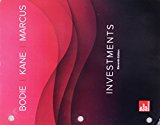
Concept explainers
A
To explain: Calculate the total cash flow in strategy at different time intervals and as per the given information.
Introduction: An arbitrage strategy is given, first future contract price
A
Answer to Problem 19PS
Thus the final cash after
Explanation of Solution
Given information: Future contract price
There are two future prices with definite time period, initially the cash was zero, after one year it will be
B
To explain: If arbitrage opportunity is none then why profit will be zero at time
Introduction: An arbitrage strategy is given, first future contract price
B
Answer to Problem 19PS
Thus investment at this period is zero and also it is risk free. Hence the total profit also is null when there is no arbitrage opportunity.
Explanation of Solution
Given information: Future contract price
In the absence of the arbitrage opportunity the profit will be zero because investment in time
C
To explain: Establish the relation between
Introduction: An arbitrage strategy is given, first future contract price
C
Answer to Problem 19PS
Hence relation between
Explanation of Solution
Given information: Future contract price
At last stage for profit should be zero at time
Want to see more full solutions like this?
Chapter 22 Solutions
GEN COMBO LOOSELEAF INVESTMENTS; CONNECT ACCESS CARD
- solve this question.Pat and Chris have identical interest-bearing bank accounts that pay them $15 interest per year. Pat leaves the $15 in the account each year, while Chris takes the $15 home to a jar and never spends any of it. After five years, who has more money?arrow_forwardWhat is corporate finance? explain all thingsarrow_forwardSolve this finance problem.arrow_forward
